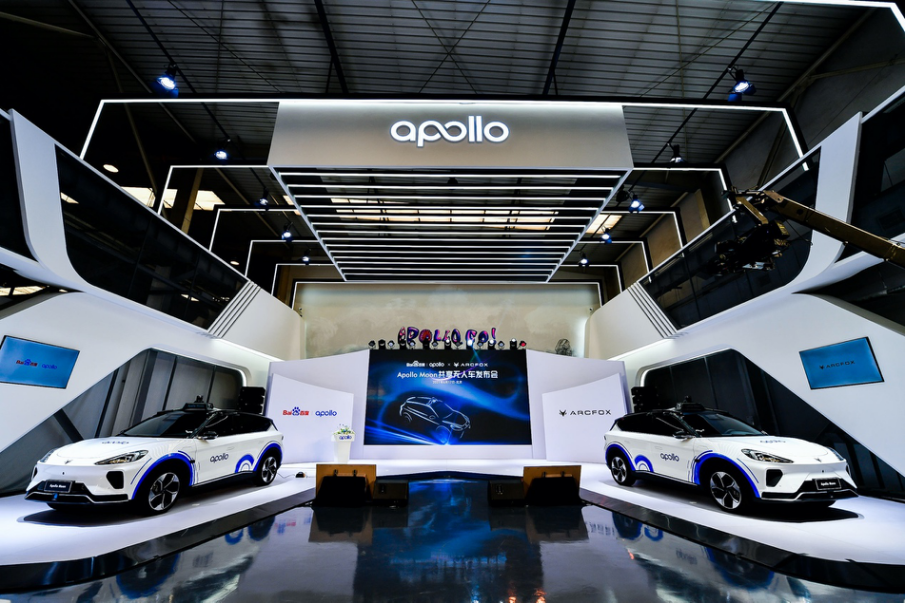This article is reproduced from the official account of autocarweekly
Text by: Joey
Prior to the Apollo Moon launch event yesterday, I suddenly realized that the autonomous driving technology used in the ARCFOX Extreme Fox Alpha T model does not come from Huawei, but from Baidu. As I was wondering whether future users of BAIC should choose Baidu or Huawei, the protagonist of this launch event, Apollo Moon, turned out to be a fully commercial Robotaxi.
The name Apollo Moon comes from the 1969 United States Apollo lunar landing program, the first and only time in human history that we set foot on an extraterrestrial land. Baidu probably named this Apollo Moon with powerful symbolic meaning in the hope that it would become a milestone in autonomous driving (by the way, returning to the topic, yesterday’s launch event of the Apollo Moon model happened almost at the same time as the successful launch of China’s Shenzhou-12 spacecraft, which built our country’s own space station and also had a strong symbolic meaning).
Unlike the Alpha S model which used Huawei’s intelligent driving technology, the Apollo Moon model which is equipped with Baidu’s fifth-generation shared autonomous vehicle (SAV) technology is a new generation of Robotaxi for mass production. In other words, this new car is not developing intelligent driving assist technology, but unmanned driving technology can be seen from its appearance.
On top of the Apollo Moon, you can find an electronic screen that can interact with pedestrians and a customized mechanical LiDAR, which naturally reminds you of the series of external equipment equipped on many unmanned driving test vehicles (of course, Apollo Moon’s external equipment looks more refined).
Since the design is already unconventional, it is naturally not intended for regular individual consumers. Also, as a Robotaxi model, the perception system of Apollo Moon is not just on the roof. In addition to these two devices, other sensors are cleverly integrated into the body and bring better redundancy to the vehicle.
As a commercial vehicle that aims to achieve fully unmanned driving, the four doors of the Apollo Moon have independent door lock control and automatic opening functions. Users can unlock and enter and exit the Robotaxi autonomously through face recognition and mobile Bluetooth. After the passengers leave, the doors can also close automatically.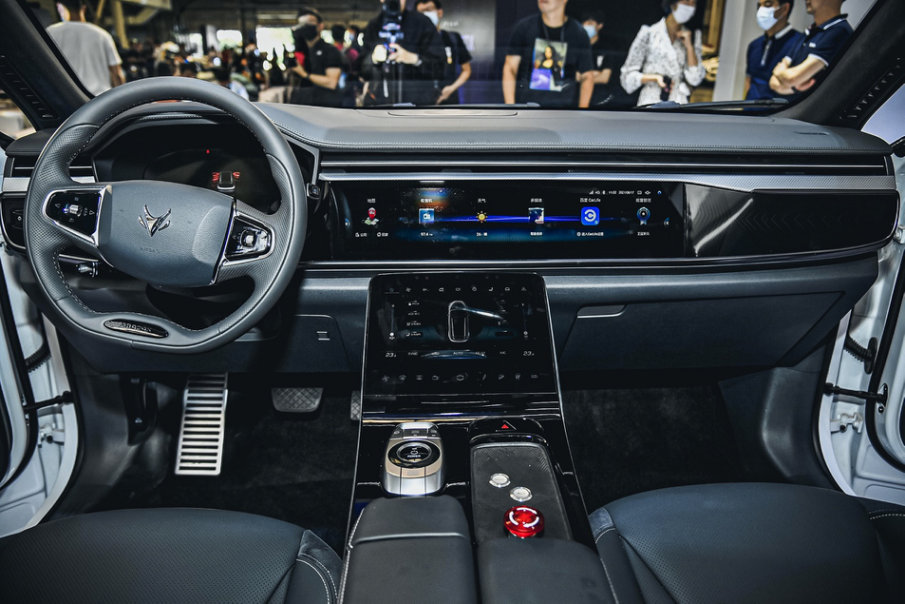
Users can also control the car windows and air conditioning through the mobile app, and enjoy the in-car entertainment system. In case of driving problems, there is an emergency button inside the car that can be used to call “5G Cloud Valet” for manual driving assistance. Apollo Moon has presented us with new scenarios for human travel that previously only existed in science fiction movies.
However, it is not only Baidu that can achieve fully autonomous driving. Previously, SAIC Group achieved a small-scale demonstration operation of 5G+L4 level autonomous intelligent heavy trucks in Yangshan Port. Achieving autonomy is not the key factor. The cost is the important factor that restricts the development of Robotaxi as a commercially operated intelligent vehicle.
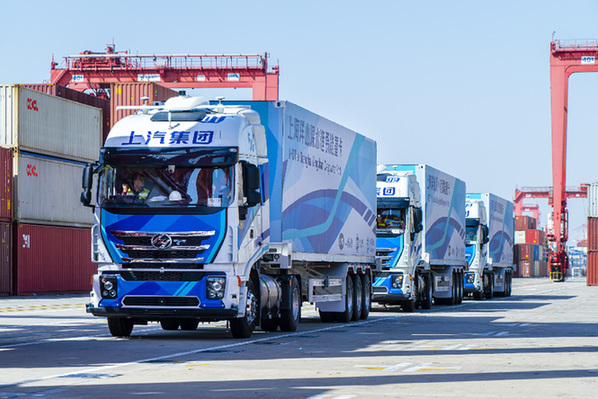
This Apollo Moon, based on the ARCFOX Alpha T model, has a total cost of 480,000 yuan combining the vehicle body and various autonomous driving hardware, making it the world’s Robotaxi production car with the lowest cost. According to the average daily cost calculation, over a 5-year period, the cost of this car is 8,000 yuan per month.
Meanwhile, the cost for a regular ride-hailing car operating in a secondary city on the market is around 11,000 to 13,000 yuan per month, including the driver and vehicle costs. Therefore, the competitive advantage of Robotaxi such as Apollo Moon is quite obvious in terms of operating costs.
However, this is not the final cost pricing as Baidu plans to release a new generation of autonomous driving platform every two years. Each generation of product will have ten times the performance of the previous generation and halve the cost. This means that once the large-scale operation is launched, the manufacturing and operating costs of Robotaxi will decrease exponentially while performance will see a significant improvement. So, the question is: does this mean that the current performance of Apollo Moon is relatively primitive?
Since Apollo Moon is based on the ARCFOX Alpha T model, it already has the basic attributes of the car. For example, the acceleration time of 0-100 km/h for this model is 4.6 seconds and the NEDC cruising range is 653 km.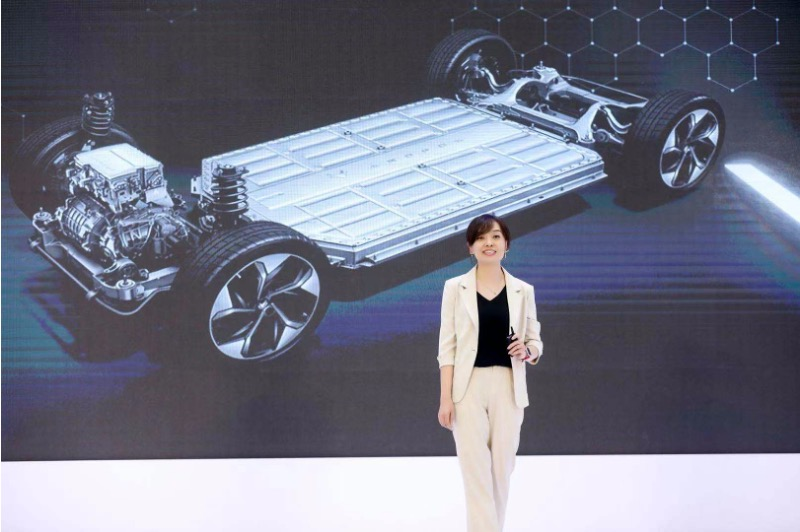
However, these are not the most important data for autonomous driving. Chip computing power, which has the ability to analyze rapidly changing road conditions and produce massive amounts of data, is the key. Therefore, Baidu has developed a self-built central computing platform with a computing power of 800 TOPS to meet this need. Obviously, this chip is very competitive in terms of computing power. At present, the only products on the market that claim to have more powerful computing power are NIO’s ET7 and ZhiJi’s L7, both of which claim that their chip computing power will exceed 1000 TOPS.
At the same time, in view of the fact that it is used for commercial operation of Robotaxi, stronger chip redundancy is required. Therefore, any set of sensors in this Apollo Moon can achieve 360° perception coverage. 13 cameras can achieve it, 1 LiDAR can achieve it, and even 5 millimeter-wave radars can achieve it, which is the real super redundancy.
Obviously, this is not a show-off, but a real safety guarantee that must be achieved for unmanned driving vehicles. In the future, Robotaxi with 5G cloud driving, V2X and other functions will undoubtedly promote the construction of urban infrastructure, and ultimately create a new scene of intelligent driving for the interconnection of vehicles, roads, and cities.
In the future, within the scope allowed by policies, the ARCFOX JIHU Alpha T equipped with Baidu’s latest generation of shared unmanned vehicle technology will soon enter real travel life. During this year, it will lead the shared unmanned vehicle landing operation in relevant demonstration areas in Beijing. At the same time, as Apollo Moon’s technology continues to mature, it will be easier to transform into civilian vehicle technology.
In this process, BAIC ARCFOX will also achieve a milestone breakthrough, truly expanding the operation mode of intelligent vehicles and commercial intelligent vehicles in completely different, but fully covering various types of markets through cooperation with Huawei and Baidu.
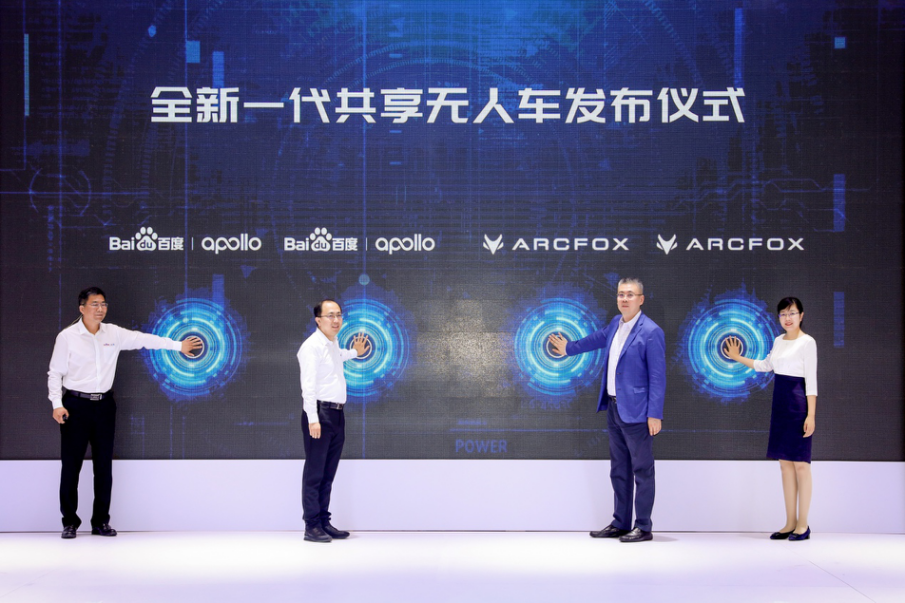
In fact, with the continuous improvement of autonomous driving technology and the popularization of civil use, I am looking forward to the integration of civil autonomous driving cars and Didi’s sharing mode. If that day truly comes, perhaps your car will replace you to go to work, make money, and take Didi, which seems to be a very anticipated future travel scene, isn’t it?
This article is a translation by ChatGPT of a Chinese report from 42HOW. If you have any questions about it, please email bd@42how.com.
